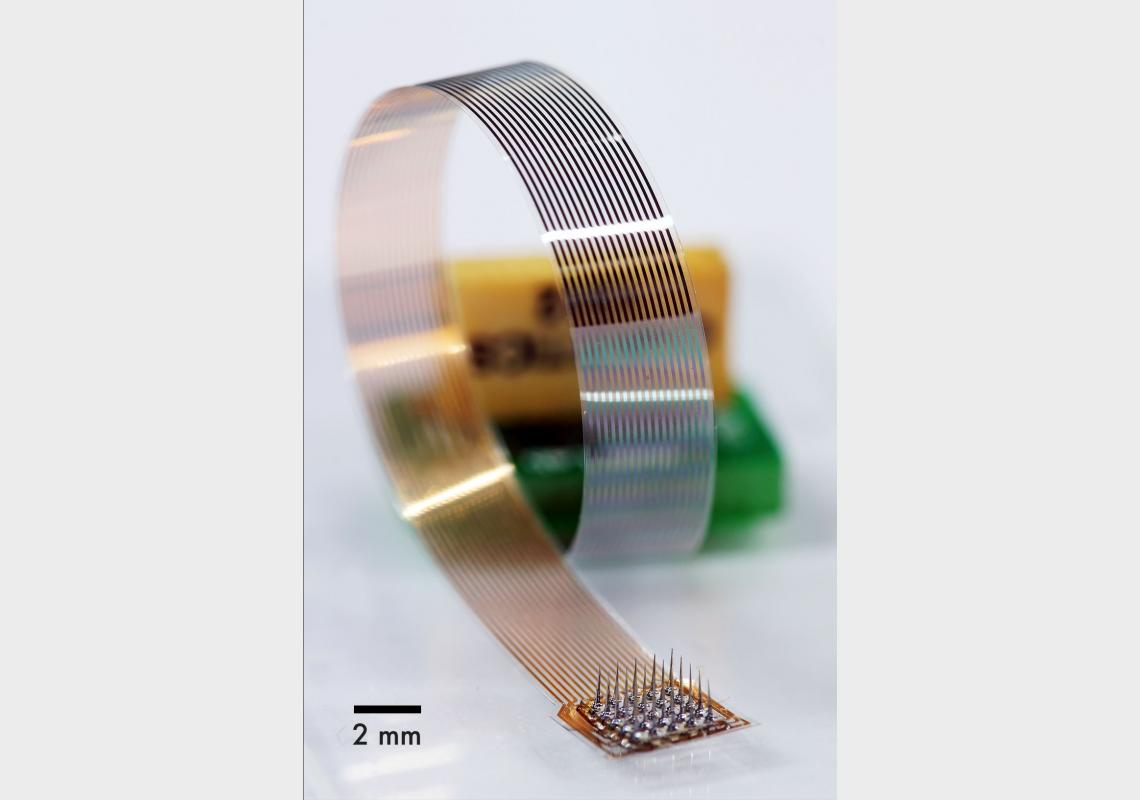A new microelectrode array embedded in a dog’s sciatic nerve clearly recorded multiple nerve signals simultaneously, demonstrating the device’s success in a medium-sized animal for the first time.
A new microelectrode array embedded in a dog’s sciatic nerve clearly recorded multiple nerve signals simultaneously, demonstrating the device’s success in a medium-sized animal for the first time, according to a study recently published in the Journal of Neural Engineering.
Researchers are seeking to tap into nerve signals using microscopic electrodes for a variety of human applications, including prosthetic limbs. Currently, the most advanced prosthetic limbs rely on signals generated by muscles, which enable a broad range of movements. However, to generate more refined, natural movements — individual fingers, rather than four fingers together, for example — prosthetics need signals from specific nerves in the adjoining tissue.
Electrodes placed on or within a nerve can read and stimulate nerve signals. Penetrating electrodes are more selective than non-penetrating ones because they target individual nerve fibers called axons. But they face several challenges: some fold during implantation and fail; flat electrodes cannot fully make contact with the nerve’s curved surface; and in-flexible communication wires push and pull on the tissue, which can cause substantial damage.
To overcome these challenges, scientists from South Korea’s Daegu Gyeongbuk Institute of Science and Technology (DGIST), Gwangju Institute of Science and Technology and collaborators developed a flexible penetrating microelectrode array (FPMA).
The array is made of multiple silicon needle microelectrodes laid out in a grid atop a flexible support platform. A 4 x 4 electrode array spans about four square millimetres —which would fit on the thin edge of a coin. The electrodes are affixed to a clear communication cable that is just 2mm wide and 60.7 mm (2 in.) long, and consists of titanium and gold wires covered in a flexible polymer, parylene C. The cable runs to a micro-connector protruding out of the skin, which connects to an amplifier that magnifies the signals.
Arrays were embedded in the sciatic nerves of three beagles while the animals were under anesthesia. During a four-week test, nerve signals were stimulated by pinching or pricking the animals’ hind paws while under anesthesia. The arrays detected clearly-defined signals on up to 11 of 15 active electrodes.
“We successfully detected nerve signals using a new kind of high-channel-count nerve interfacing device, the flexible penetrating microelectrode array,” said Sohee Kim, associate professor of robotics engineering at DGIST. “Although not 100% of electrodes in the device recorded, the recorded signals were of high quality with high signal-to-noise ratio and low background noise level.”
The array is expected to cause less damage to surrounding tissue than comparable devices because of its flexible materials and design, which is currently under study. There was minor deformation of the nerve near electrodes, but no nerve degeneration, the researchers report. There was also some swelling and skin irritation around different parts of the device. The researchers want to reduce the size and weight of the assembly to minimize these side effects. Eventually, they want to eliminate the communication cable completely and move to wireless data transmission.
For more information, contact
Associate Professor Sohee Kim
Neural Interfaces & MicroSystems Lab
Daegu Gyeongbuk Institute of Science & Technology (DGIST)
E-mail: [email protected], [email protected]



